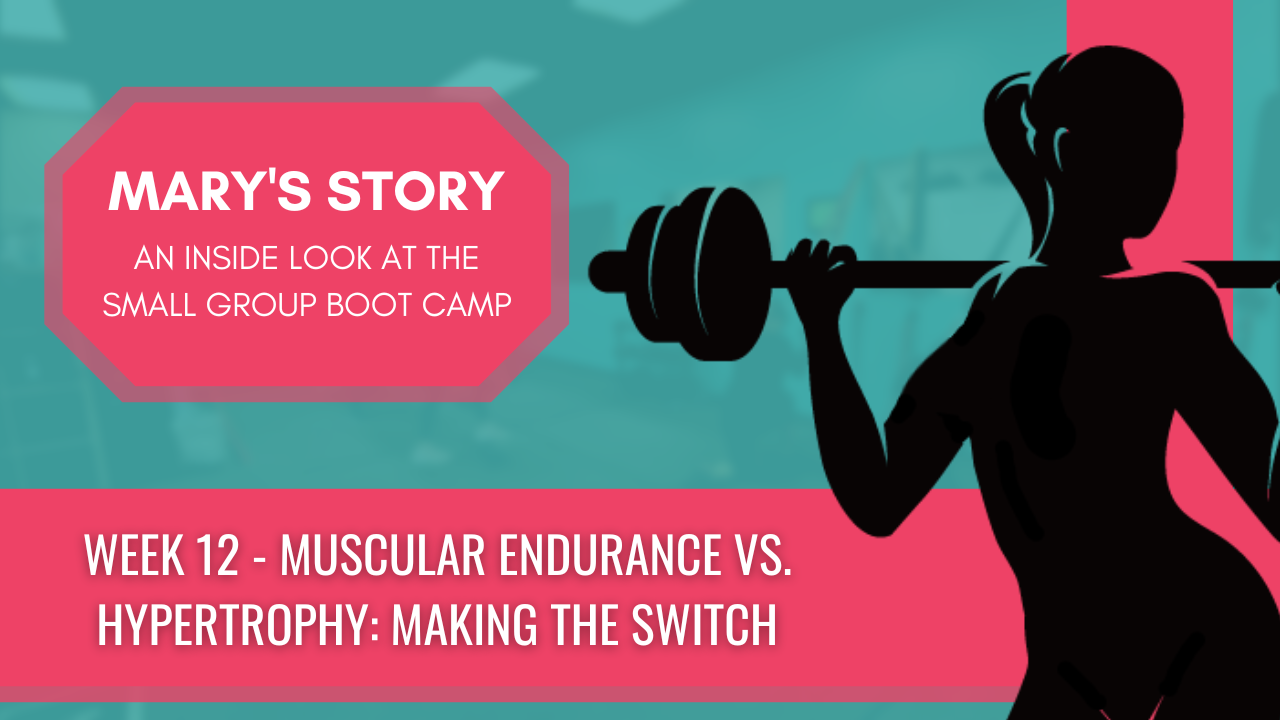Week 12 – Muscular Endurance vs. Hypertrophy: Making the Switch

Mary schedules her classes for the week when a message pops up on her phone:
“You Did It Mary! You have completed 40 workouts! Check in with your Coach to discuss the next steps in your programming!”
Table of Contents
Endurance vs. Hypertrophy Training
At class Coach explained that Mary is ready to switch her training protocol from prioritizing muscular endurance to hypertrophy.
Training for muscular endurance improves the muscles’ ability to lift weights for longer periods of time, while training for hypertrophy means focusing on building bigger muscles and/or preserving muscle tissue during a weight loss goal.
Yes ladies, the booty is a muscle and it will grow.
A great beginners program starts with prioritizing muscular endurance using lighter weights and higher repetition to develop a strong weight lifting foundation. This initial phase with a lighter load improves a person’s familiarity with the fundamental movements, prepares their body to lift heavier weights, and reduces the risk of injury with the increasing loads lifted during a hypertrophy phase.
Here are the main changes that Mary is making in the Small Group Boot Camp to transition from endurance to hypertrophy.
1. Weight/Load
Moving up the weights used is the most noticeable difference. She wants to choose a weight that’s challenging to lift. If the weight is too light, she won’t get the best results possible because it will be difficult to reach near failure. Reaching near failure, struggling to complete another repetition at the end of a set, promotes the most muscle growth.
2. Repetitions
12-20 repetitions per set is used when training for muscular endurance. However, for hypertrophy Mary wants to lift 8-12 repetition per set. With the heavier weights it should be hard to perform more than 12 repetitions. If Mary is able to lift the weight used for 14-15 repetitions, it’s time to go heavier so she stays within the 8-12 rep range.
3. Rest
It’s time to increase the duration of rest breaks. Shorter rest breaks of 15 to 30 seconds use an energy system that improves muscular endurance. With the switch to hypertrophy, Mary’s rest breaks will increase to 45 to 90 seconds between sets. These longer rest breaks allow her to better recover between sets and continue lifting the heavier weights set after set. To achieve this longer break in class, Mary should stop once she reaches her goal repetitions and use any extra time to recover. She should also skip the sprints and rest instead.
It’s a common misconception that we need to “change up” the exercises to make further progress.
Instead, changing how Mary executes the exercises will result in preserving muscle tissue and targeting fat loss.
Mary has officially reached Stage Two of her programming!
